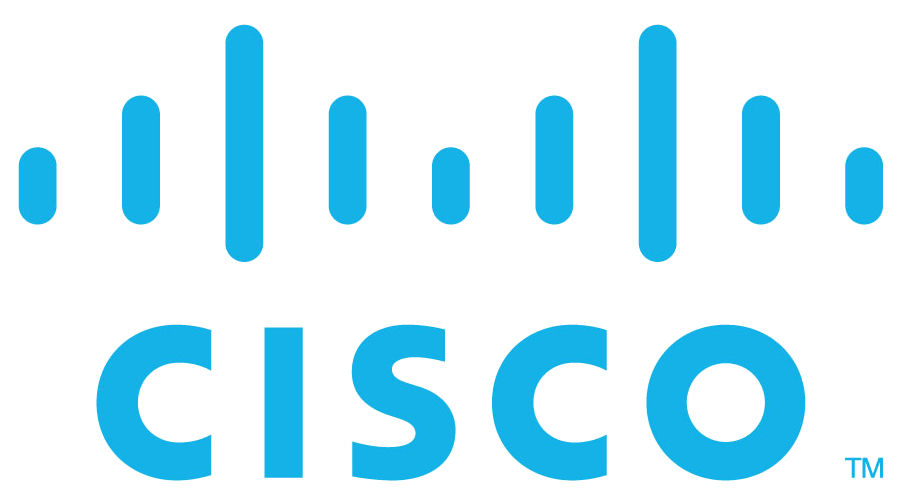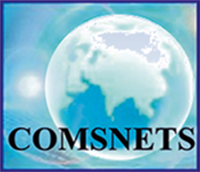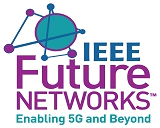Demos & Exhibits
Considering health and safety concerns as well as statutory restrictions preventing travel and gatherings, the conference will not hold an in-person, physical conference this year. Rather, COMSNETS 2021 is going VIRTUAL.
Since COMSNETS will be held VIRTUAL this year, a dedicated live Q&A session for each accepted demo is planned through the virtual platform. More details on this will be provided soon.
The 13th International Conference on COMmunication Systems and NETworkS (COMSNETS) will be held in Bangalore, India, from January 5 - 9, 2021. COMSNETS is a premier international conference dedicated to advances in Networking and Communications Systems. The conference is a yearly event for a world-class gathering of researchers from academia, industry, practitioners, and business leaders, providing a forum for discussing cutting edge research, and directions for new and timely innovative business and technology.
COMSNETS 2021 invites demos from researchers, startups, and corporates showcasing cutting-edge technologies and their applications. The topics of interest include, but are not limited to, the following:
- 5G and wireless broadband networks
- Technologies for 6-100 GHz spectrum
- Visible light communications
- Heterogeneous networks (HetNets)
- Cognitive radio & white-space networking
- Economics of networks
- Energy-efficient communications
- Cloud computing
- Enterprise, data center, & storage-area networks
- Internet architecture and protocols, Internet science & emergent behavior
- Mobility and location management
- Mobile sensing
- Traffic analysis and engineering
- Internet of Things (IoT)
- Caching & content delivery systems
- Information/Content centric networks (ICN)
- Network management and operations
- Network security and privacy
- Trusted computing
- Network science
- Online social networks
- SDN/NFV and Network Programmability
- Internet Measurement and Modeling
- Networks for smarter energy & sustainability
- Vehicular Networks & Intelligent Transportation
- Smart Grid communications & networking
- Machine Learning and AI in Networking
- Big Data/IoT Analytics in Networking
- Blockchain and Distributed Ledger
Every selected demo will be exhibited and given ample time for audience interactions. Corporate and research demos will have the option of longer demos. Due to the uncertainties caused by the COVID-19 pandemic, COMSNETS will allow authors of accepted papers to present and participate remotely if they wish to do so.
Dedicated Demo Sessions
Continuing on the positive experience from last year, this year as well we are going to have additional dedicated demo sessions without any simultaneous paper sessions, thus allowing the entire attending community to visit the demo booths.
Why should you submit a Demo or Exhibit?
COMSNETS is one of the premier conferences in its domain held every year in India. This is a unique opportunity to showcase your technologies and applications to international audiences at large, that is helping build the next generation of innovative technologies. To ensure you get the most out of the event we have the following planned:
- Interactions with expert panels
- Showcase to industry partners, potential recruits and potential investors
- Media coverage during the event
- Wider outreach as part of conference proceedings
Best Demo Awards
The COMSNETS 2021 Demo committee will review all submissions to select the accepted demos. All accepted demos will be considered for the Best Demo Award. A committee will decide the winner on-site after evaluating all demo presentations.
What to submit?
Submission Categories
There are following two different submission categories i.e. research demo, and product demonstrations.
Research Demo: Research prototype with novel and clear technical contributions are invited. Authors of accepted full papers are highly encouraged to submit original demo entries.
A maximum of 3-pages extended abstract of the demo that captures motivation for the problem, the solution approach, results (if any), and a brief description of the technology demonstration. The abstract should use the same template as for the main conference paper submission. Abstracts which do not adhere to the conference template will be rejected without review. All submissions must be in PDF format.
All the submitted entries will go through a peer-review process. Accepted and presented submissions in this category will be published in the conference proceedings and submitted to Abstracting and Indexing (A&I) databases.
Start-ups and Product Demos: Proposals (maximum of 3 pages) to showcase products from startups and industries are invited in this category. Submissions in this category will require a proposal outlining the motivation and the technology/use case that will be demoed. All the sponsoring organizations are encouraged to submit an entry in this category.
How to Submit
Please make your submissions through EDAS submission portal.
Camera-Ready Instructions
- Camera-ready versions of the documents are needed only for Research Demos.
- Camera-ready instructions are at https://www.comsnets.org/camera_ready.html. The page limit for demo submissions is a minimum of 1 page and a maximum of 3 pages.
- The authors of the accepted papers should submit the camera-ready paper and the copyright transfer through the EDAS site strictly for their respective demos.
- Along with the final camera-ready paper, the authors of the accepted papers are also requested to submit a video presentation upto 10 minutes (maximum) discussing their demo via the EDAS site.
Important Dates:
| Submissions Deadline | |
| Notification of Acceptance | |
| Camera-ready Submission | |
| Additional documents (Slides and Video presentation) | 22nd December 2020 |
| Event date | 6--7th January 2021(schedule) |
Lightning Talks
Each accepted demo will be given 1 minute on the main stage to advertise their demos to the larger audience.
Sponsor/Product Demos

Unlock the Power of Containers on Cisco Enterprise Portfolio
Uma Sankar Mohanty, Mrigendra Patel, Pulkit Bindlis (Cisco Systems Ltd., India)

This session in a nutshell will provide an overview of Smart Licensing with Policy, which is an enhanced version of existing smart licensing solution. We will discuss more about deploying SL with Policy on IOS-XE Routers and Switches products. We will go over some of the common scenarios of SL with Policy deployment on these products and few case studies. The goal of this session is to discuss SL with Policy in detail and how we deploy them easily on IOS-XE products. How SL with Policy solves the flexibility of license allocation and eases the management. We will also put some case study from TAC expertise, which can be leveraged by customers/partners to resolve their specific issues or achieve any specific requirement.
Uma Sankar Mohanty, Mrigendra Patel (Cisco Systems Ltd., India)

Matrix Analytics Platform
Abhishek Pathak (Cisco Systems, Inc., India); Ashish Jain (Cisco Systems Ltd., India),

ConfTube: Home for your Conference Videos
Raj Sharma and Jeril Sebastian (VideoKen, India)
Open Transit Data (OTD) availability presents an excellent opportunity for commuter-centric applications. Applications that use OTD to inform users about their commute. Moreover, the current scenario demands applications that make travel in public transit safer and more comfortable. To this cause, we present a contactless e-ticketing solution for public transport buses allowing passengers to purchase tickets in a contactless manner. It is currently in a trial phase since September and has sold over 200k tickets. The system also presents opportunities for third-party vendors to develop similar solutions.
Rajan Girsa, Kshitij Srivastava and Atul Jain (Indraprastha Institute of Information Technology & Mobility and Optimisation Lab, India); Pravesh Biyani (IIIT Delhi, India)
Research Demos
Autonomous Networking is expected to be the mode of functioning by future networks, including 5G wireless networks. This requires intelligent data analytics and cognitive capabilities to be inherently supported as part of the networking functions, in addition to the current capabilities such as automation and correlation. This demonstration presents CygNet MaSoN, a management system that integrates multiple instances of radio access and core network functions of 5G networks supporting advanced aggregation and analytics features. This system continuously collects critical data related to network and system events, performance measurements and key performance indicators (KPIs) in real-time. It then uses the associated machine learning system to provide insights on network behaviour, estimation of service quality/experience and prediction of probable future network problems. Some of the analytics and machine learning use cases related to 5G networks and implemented on the MaSoN system are also described.
Archana T, Deepika V, Arjun Kumar A and Madanagopal Ramachandran (NMSWorks Software Pvt Ltd., India); Krishna M. Sivalingam (Indian Institute of Technology Madras, India); Babu Narayanan Koonampilli J (CEWIT, IIT Madras, India)
This demonstration will present the operation and main features of the 5G Core software system based on 3GPP Release 16. The system is being developed as part of the Indigenous India 5G testbed project, led by IIT Madras. The core software is based on Network Function Virtualization concepts and the Service Based Architecture (SBA). The main features to be demonstrated in the current version will be UE (de)registration, PDU session establishment and release.
Babu Narayanan Koonampilli J (CEWIT, IIT Madras, India); Mythili Vutukuru (Indian Institute of Technology, Bombay, India); Krishna M. Sivalingam (Indian Institute of Technology Madras, India); Anusuya Balasubramanian (Centre of Excellence in Wireless Technology, India); Raghavan Viswakumar Vinodh (Center of Excellence in Wireless Technology, India); Susheela Seshasayee (Center of Excellence in Wireless Technology (CEWiT), India); Kapil Gokhale (Indian Institute of Technology Bombay, India); Deepak Vasuki Kashyap and Radhakrishna Rajaram Kamath (Indian Institute of Technology Madras, India)
We present a co-emulation framework for Connected Autonomous Vehicle for development and validation of technologies for teleoperation of semi-autonomous vehicles. Despite several technical advancements in the autonomous vehicles' domain, Automated Driving System (ADS) deployments were limited to SAE level-3. Remote driving capability offers a promising fallback option. In order to establish a technology stack over existing and new network infrastructure, we need a simulation or emulation framework, to test the system before deploying it on the road. Our framework enables testing with an actual vehicle and a simulated network, and we demonstrate a tele-driving use-case of a retrofitted electric car.
Srikrishna Acharya (Robert Bosch Center for Cyberphysical Systems, India); Sadgun Srinivas Devanahalli Shashikumar, Alok Rawat and Varghese Kuruvilla (IISc, India); Pratik Sharma and Bharadwaj Amrutur (Indian Institute of Science, India); Ashish Joglekar (Robert Bosch Center for Cyberphysical Systems, India); Raghu Krishnapuram (IISc, India); Yogesh Simmhan and Himanshu Tyagi (Indian Institute of Science, India)
COVID-19 pandemic has impacted millions of people worldwide. To tackle the spread of disease, governments all over the world had to impose sudden lockdowns with strict restrictions and has resulted in stressing most of the enterprises on the financial fronts. As the government is now relaxing the restrictions, businesses are re-opening gradually and employees are returning back to work. There is huge responsibility on the enterprises to stay vigilant when an employee tests positive for COVID-19. To target the issue, we have come up with a contact tracing solution, P-Tracer application which uses users wifi association data from Arista Networks' Cloud-Vision Wifi. This demo paper shortly presents the P-Tracer application working principle a. We claim that the app will be useful in tracing the users association journey and detection of new hot zones and possible new cases.
Laxmi Thakare, Ruchi Dohare and Nadeem Akhtar (Arista Networks, India)
We present VibranSee, a visible light-based prototype system that jointly achieves communication and sensing of mechanical vibrations by employing optical strobing and high-frequency signal modulation concurrently.
Ila Gokarn and Archan Misra (Singapore Management University, Singapore)
Multi-access Edge Computing (MEC) is an evolving technology and considered as one of the critical enablers for technologies to meet the IMT definition of 5G communications. It integrates the service provider's network with the high-performance computation facility to cater to various applications such as augmented reality, vision applications, etc., at the network edge. Thus, reducing the overall latency and preserving the bandwidth to send the complete data to the centralized data centers for processing instead. Furthermore, MEC opens up tremendous business opportunities for telecommunication companies by offering a service platform for deploying various services specific to consumers and industry at the network edge. In this work, we have demonstrated a full-fledged MEC architecture, including its entities, and integrated with 5G core following ETSI 5G specification with an application deployment use-case. The various MEC and 5G core components are instantiated in the virtual machine as a guest; the complete data path and control path is established between all core components following a service-based architecture. The MEC system developed is a part of the indigenous 5G Test-Bed project and follows the ETSI architecture. The developed system is suitable for executing various applications that require data offloading, extensive storage and computing resources. Thus, our working MEC system establishes a proof of concept and closely resembles a real-world deployment of MEC system in 5G environment.
Arzad Kherani (Indian Institute of Technology, Bhilai, India); Gaurav Shukla (IIT Delhi, India); Shashvat Sanadhya (Indian Institute of Technology Delhi, India); Muneeb Ahmed and Neha Vasudev (Indian Institute of Technology, Delhi, India); Ashish Singh Patel, Rashi Mehrotra and Brejesh Lall (Indian Institute of Technology Delhi, India); Huzur Saran (Indian Institute of Technology, India); Mythili Vutukuru (Indian Institute of Technology, Bombay, India); Abhishek Singh (IIT Bombay, India); Susheela Seshasayee (Center of Excellence in Wireless Technology (CEWiT), India); Raghavan Viswakumar Vinodh (Center of Excellence in Wireless Technology, India); Kishore Loganathan (Centre of Excellence in Wireless Technologies, India)
3GPP 5G New Radios are expected to operate not only on the licensed bands but also on the unlicensed and shared bands. To process such a wideband spectrum, the base stations should be capable of characterizing the wideband spectrum. Moreover, since multi-antenna and beamforming are de-facto approaches in 5G, characterization of spectrum is desired over both time as well as spatial domains. In this demonstration, we develop an intelligent and reconfigurable architecture for non-contiguous wideband spectrum characterization which involves the recovery of wideband band spectrum and determination of occupancy status, carrier frequencies and direction of arrivals of the detected busy bands. Here, reconfigurability allows the base station to select and digitize non-contiguous frequency bands by performing sparse sensing in temporal and spatial domain. Whereas intelligence allows the selection of desired frequency bands such that characterization failure does not occur. This demonstration has found significant traction both with academia as well as industry given the multitude of use cases in 5G requiring efficient sensing and spectrum characterization for enhanced system operation.
Himani Joshi (IIIT-Delhi, India); Mohammad Alaee-Kerahroodi (Interdisciplinary Center for Security, Reliability and Trust, Université du Luxembourg, Luxembourg); Bhavani Shankar Mysore R (Interdisciplinary Centre for Security, Reliability and Trust & University of Luxembourg, Luxembourg); Sumit Jagdish Darak (IIIT-Delhi, India)
A real-time multi-bot system consists of a group of robots working together to accomplish a common task. Each robot in the environment is provided with its own set of sensors, communication modules, vision systems, and control systems. A robot in the multi-bot environment is given complete autonomy or partial autonomy or teleoperated based on the task. For a robot to navigate autonomously, they should be capable of knowing their own position and pose in the environment, I.e., localization. Localization is achieved by the process of Data Fusion. Data fusion is the process of combining the data from sensors that sense motion and sensors that represent the environment. For a robot, the data collected from its sensors are available only to itself. In a multi-bot system, the data collected from a single robot should be made available to all the other robots in the environment. Each robot collects the sensor data of its own and shares this information among all the other robots in the environment. The connectivity and exchange of data between individual robots is a key issue in a multi-bot environment. The multi-bot system performance and safety can be increased by high speed, low latency exchange of data between individual robots. Moreover, keeping a robot informed about others in their surroundings increases the knowledge and makes each robot take a global decision in the environment rather than local decisions. This experiment demonstrates the high-speed exchange of information between robots and quantifies the delay elapsed in it. This also proves ROS2 has good performance over ROS and best suited for the multi-bot system.
Dhanaprakaash Ganapathy (Indian Institute of Science, Bangalore, India); Bishal Jaiswal (Indian Institute of Science, India); Srikrishna Acharya (Robert Bosch Center for Cyberphysical Systems, India); Anush Kumar, Aruul Mozhi Varman Senthilkumar, Kavish Shah, Mohitvishnu S. Gadde, Sourav Mishra, Aditya Gopalan, Bharadwaj Amrutur, Himanshu Tyagi and Preetam Patil (Indian Institute of Science, India); Raghu Krishnapuram (IISc, India); Soumya Subhra Banerjee and V Sundaram Suresh (Indian Institute of Science, India)
Motivated by the emerging delay-sensitive applications of the Internet of Things (IoT), there has been a resurgence of interest in developing medium access control (MAC) protocols in a time-slotted framework. The resource-constrained, ad-hoc nature of wireless networks typical of the IoT also forces the amount of control information exchanged across the network - required to make scheduling decisions - to a minimum. In a previous article we proposed a protocol called QZMAC that (i) provides provably low mean delay, (ii) has distributed control(i.e., there is no central scheduler), and (iii) does not require explicit exchange of state information or control signals. In the present article, we implement and demonstrate the performance of QZMAC on a test bed consisting of CC2420 based Crossbow telosB motes, running the 6TiSCH communication stack on the Contiki operating system over the 2.4GHz ISM band. QZMAC achieves its near-optimal delay performance using a clever combination of polling and contention modes. We demonstrate the polling and the contention modes of QZMAC separately. We use an Adaptive Synchronization Technique in our implementation which we also demonstrate. Our network shows good delay performance even in the presence of heavy interference from ambient WiFi networks.
Shivam Vinayak (Indian Institute of Science, India); Avinash Mohan (Technion, Israel Institute of Technology, Israel); Anurag Kumar (Indian Institute of Science, India)
In many cities in India, millions of commuters use public transit for traveling to various places in a city. Public transit offers an inexpensive way to travel which is crucial in a poor country like India. Public transit thus increases economic mobility and is therefore very crucial. However, unlike most developed world, the information regarding the arrival of transit as well as the general information about the possible routes of transit is not available which reduces the potential users of transit considerably. This leads to congestion and pollution due to the sub-optimal use of transit. An efficient and usable real-time trip planning feature is therefore a necessary pre-requisite to the adoption of the public transit in cities in India. The proliferation of smart mobile phones has made it possible for the commuters to access the real-time information about the transit. The natural question therefore is: how to show public transit information to the commuters in an ``optimal" way.
Srija Anand (Indraprastha Institute of Information Technology, Delhi, India); Pravesh Biyani (IIIT Delhi, India); Raashid Altaf (Indraprastha Institute of Information Technology, Delhi, India)
This paper presents MagnaSense, the first of its kind wireless computer 'mouse' that uses two magnetometers, and principles from magnetism and electromagnetic induction to achieve performance comparable to a traditional computer 'mouse', but with three degrees of freedom instead of two. We demonstrate MagnaSense to have the ability to draw various shapes as well as write text on the screen. Our prototype of MagnaSense is affordable, non-intrusive, handy and easy to use, with the user just requiring a magnet in his hand.
Rushil Kaushal Sanghavi (Indian Institute of Technology Jodhpur, India); Ravi Bhandari (IIT Bombay, India)
Demos & Exhibits Chair

Kaustubh Dhondge
Glaukes Labs, USA

Alok Ranjan
Hitachi Research, India

Kuldeep Yadav
VideoKen, India






































